
Introduction
Eco-Friendly Rangoli is a beautiful way to celebrate while caring for the planet. As the world becomes more conscious of environmental issues, it’s important to bring sustainability into every aspect of our lives, including our traditions. Rangoli, a colorful and vibrant art form, is often made with synthetic powders that can be harmful to the environment. However, there are eco-friendly alternatives that can allow us to celebrate festivals and occasions while preserving the planet. In this blog, we’ll explore how you can create beautiful Rangoli designs using sustainable materials, ensuring that the art form remains both culturally significant and environmentally conscious.
1. The Environmental Impact of Traditional Rangoli Colors
Synthetic Dyes and Their Consequences
Traditional Rangoli powders are often made from synthetic dyes, which can pose a significant threat to the environment. These chemical dyes can contaminate soil and water when washed away, harming plants, animals, and aquatic life. Additionally, the production of synthetic dyes requires chemicals that contribute to pollution and resource depletion.
Why It’s Time to Go Eco-Friendly
With growing awareness about environmental sustainability, people are shifting towards more eco-friendly practices, and Rangoli is no exception. By using natural, biodegradable materials, we can continue the tradition of Rangoli without harming the environment. Not only will eco-friendly Rangoli reduce pollution, but it will also encourage mindfulness and help preserve cultural practices for future generations.
2. Eco-Friendly Materials for Rangoli
Natural Rangoli Colors
Switching to natural colors for Rangoli is one of the most impactful ways to make this art form environmentally friendly. Here are some natural alternatives to synthetic dyes:
- Turmeric Powder: A vibrant yellow powder, turmeric is commonly used in Indian households and offers a natural and eco-friendly color for Rangoli. It’s safe for the environment and can be easily washed away without causing harm.
- Rice Flour: Often used in combination with natural colors, rice flour can be used to create intricate Rangoli patterns. You can dye rice flour with natural ingredients such as turmeric, beetroot juice, or spinach powder.
- Flower Petals: Using fresh or dried flower petals for Rangoli not only adds natural beauty to the designs but also makes them completely biodegradable. Marigolds, roses, and chrysanthemums are commonly used to create stunning Rangoli patterns.
- Beetroot Powder: A natural red dye made from beetroot, this is an excellent alternative to synthetic red Rangoli colors. It’s safe, sustainable, and provides a deep, rich hue for Rangoli.
- Sandalwood Powder: Sandalwood powder can be used for creating soft, earthy tones, perfect for creating serene, spiritual Rangoli designs.
3. Creating Eco-Friendly Rangoli Designs
Using Natural Ingredients
When making Rangoli with natural ingredients, you can experiment with textures and color combinations to create unique designs. Here are some tips:
- Floral Rangoli: Use fresh flower petals to create intricate and colorful patterns. You can combine different flowers like marigolds, roses, and jasmine to create a vibrant and fragrant Rangoli. Flower petals are completely biodegradable and can be easily disposed of after use.
- Rice Rangoli: Rice flour, when dyed with turmeric or other natural dyes, can be used to make finely detailed Rangoli patterns. This material is gentle on the environment and easy to clean up.
- Leaf and Seed Rangoli: Instead of using synthetic colors, you can incorporate seeds, leaves, and even grains like lentils or pulses. These materials are biodegradable and can be a wonderful way to create rustic, earthy designs.
- Sand and Clay Rangoli: You can create beautiful Rangoli using colored sand or natural clay powders, both of which are eco-friendly and readily available. Sand Rangoli, in particular, can be used for outdoor festivals, creating large, colorful patterns that don’t harm the environment.
Eco-Friendly Tools for Rangoli
Along with using natural colors, you can choose eco-friendly tools to create your Rangoli. Instead of plastic stencils or tools, use wooden or bamboo stencils that are reusable and biodegradable. Bamboo brushes can also be used for applying powder or making fine lines.
4. Eco-Friendly Rangoli at Festivals
Diwali and Sustainability
Diwali, the Festival of Lights, is a time when Rangoli takes center stage. As one of the most widely celebrated festivals in India, it’s the perfect opportunity to practice sustainability. Instead of using chemical dyes, make your Diwali Rangoli with natural powders, flowers, and rice flour. You can also involve your family in creating Rangoli with eco-friendly materials to pass on the tradition of sustainability.
Navratri with a Green Touch
Navratri is another festival that often involves elaborate Rangoli designs. You can celebrate the power of the Goddess Durga while being mindful of the environment. Use flowers, grains, and turmeric powder to create designs that represent strength, purity, and spiritual growth. Not only will this keep the tradition alive, but it will also keep your celebrations eco-friendly.
Eco-Friendly Rangoli for Other Occasions
Eco-friendly Rangoli isn’t just for festivals. It can be used during weddings, housewarming parties, and other celebrations. For weddings, using flower petals, rice flour, and eco-friendly colors can add a charming and unique touch to the celebrations. Similarly, for housewarming ceremonies, you can use natural elements like leaves, seeds, and flowers to welcome prosperity into your new home.
5. The Benefits of Eco-Friendly Rangoli
Preserving Tradition and Nature
Eco-friendly Rangoli not only ensures that you celebrate traditions in a sustainable way, but it also helps protect the environment. Using natural materials reduces pollution, helps conserve resources, and fosters a sense of responsibility towards nature.
Healthier for You and the Planet
Natural Rangoli colors are safe for your skin and won’t cause allergies or irritation like synthetic dyes might. Additionally, using biodegradable materials ensures that your Rangoli is completely harmless to plants and animals when it’s washed away or disposed of.
Inspiring Future Generations
By adopting eco-friendly practices in Rangoli, you set an example for younger generations on how to respect the environment while preserving cultural traditions. This shift toward sustainability helps ensure that Rangoli continues to be a cherished art form for years to come.
Conclusion
Eco-friendly Rangoli offers a beautiful way to celebrate culture and tradition while protecting the environment. With the use of natural materials like flower petals, turmeric, rice flour, and clay, you can create stunning, biodegradable designs that honor the art form and contribute to a greener planet. This sustainable approach to Rangoli not only enhances the beauty of your celebrations but also helps preserve the environment for future generations.
As you prepare for your next festival or special occasion, consider incorporating eco-friendly practices into your Rangoli designs. Not only will your creations be beautiful, but they’ll also make a positive impact on the planet.

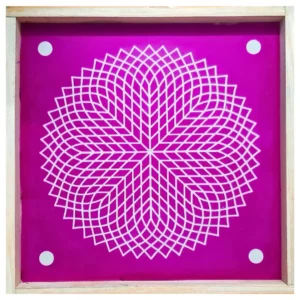
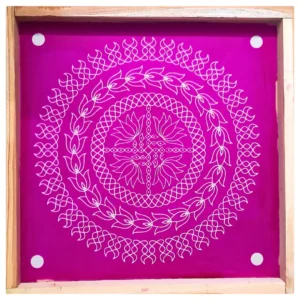
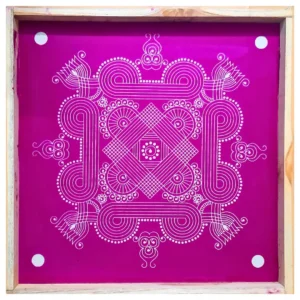
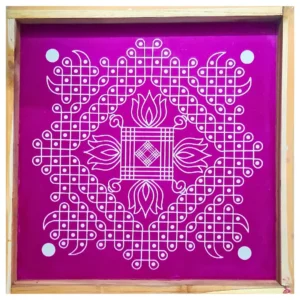
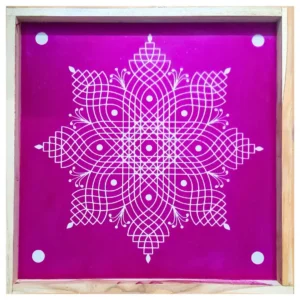
Leave a Reply